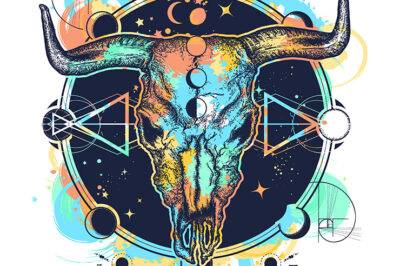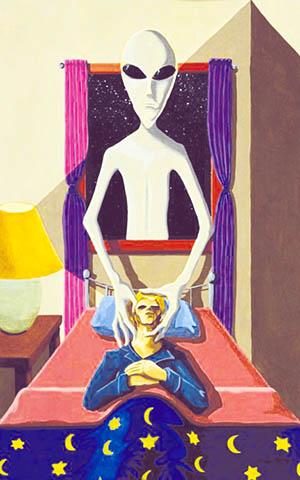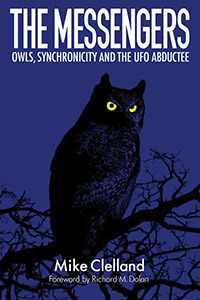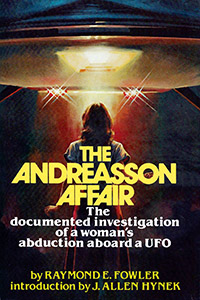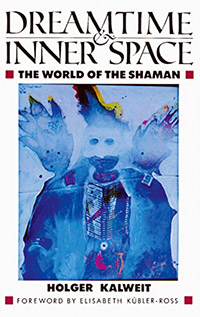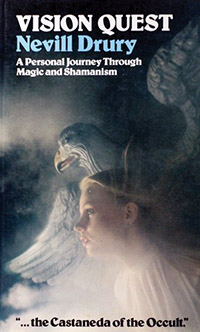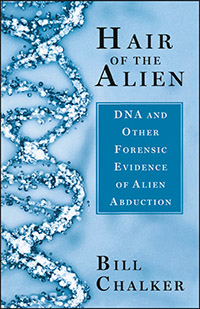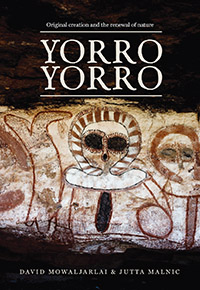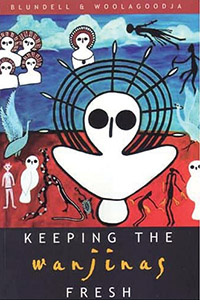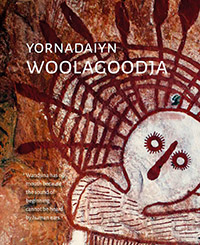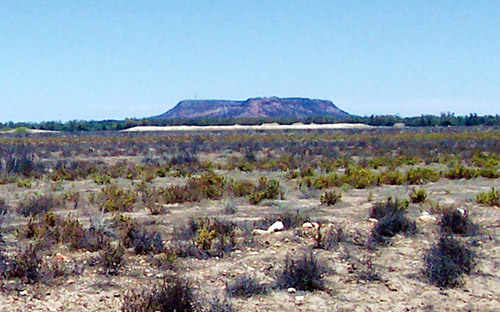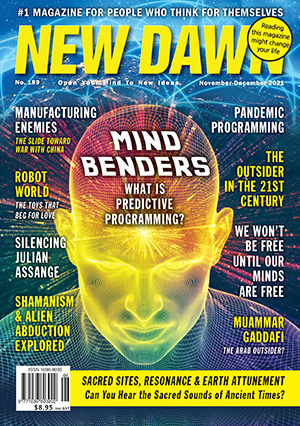From New Dawn 189 (Nov-Dec 2021)
A comparison of the two types of experiences – shamanic and alien abduction – is revealing. Folklorist Dr T.E. Bullard lists the following elements of UFO abduction narratives:
• capture
• examination (which includes tales of specimen taking, reproductive examinations, implanting of small artefacts inside the abductees, and removal of organs)
• conference (the witness talks with abductors)
• tour
• otherworldly journeys
• theophany (the witness has a religious experience or receives a message from a divine being)
• return
Michael Harner, Holger Kalweit and others list the following recurring elements of shamanic experiences:
• selection or capture
• initiation experiences (which include accounts of implanting artefacts, removal of organs, etc.)
• ‘magical flights’ including ‘celestial ascents’ to strange realms dialogues with mythic personages or spirits
• return
Consider the following. Disembowelment is undoubtedly one aspect you would not expect to find in contemporary UFO abduction accounts but astonishingly enough, such features do occasionally appear.
In the bizarre Apache Junction, Arizona case of 1971, the subject underwent a frightening examination in which he felt his chest opened and his heart briefly left his body. Sandy Larson, another abductee, reported that her abductors even removed her brain from her skull! Such experiences, on whatever level of reality or unreality they occur, are common fare in shamanic accounts.
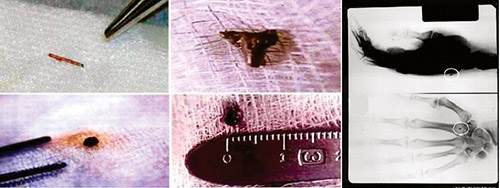
Both classes of experiences talk about the placement of artefacts within the body. In shamanism, it is crystals and the like. With UFO abductions, it is ‘implants’. Celestial ascents are common to both genres.
Even the descents into ‘other realms’ – the underworld or under the sea – that occur in shaman stories also occasionally feature in UFO abduction stories.
In the strange Filiberto Cardenas abduction story, Cardenas spoke of being taken by three human-like entities to a beach where the aliens apparently worked a combination lock on a rock. The rock opened, revealing a tunnel, “and they rushed down into the sea at a ‘great velocity’.” Even the extraordinary Andreasson affair, the subject of books by UFO researcher Raymond Fowler, featured a journey down a tunnel into a strange subterranean realm.
Animals often feature in both experiences. In the case of shamanism, they take the form of ‘power animals’ or ‘spirit allies’. Jean Achterberg, in Shirley Nicholson’s Shamanism, states: “Deer are widely associated with shamanic work. In Siberia, real-life reindeer shared the fly-agaric journeys with the shaman… The deer spirit is believed to leave the sacred peyote buttons as tracks to guide the shamans on their supernatural course …Even in prehistoric times, the deer had healing significance, based on man/deer shaman art forms that have been found on caves and artefacts.” Harner describes how the shaman utilises deer, birds, fish, wolves, bears, and other animals.
In UFO abduction accounts, the presence of animals is rationalised as “screen memories” of aliens. In his book Missing Time, Budd Hopkins describes Virginia Horton’s magical encounter in a French wood with a talking deer! In Whitley Strieber’s books, owls and wolves are often referred to. He also refers to the experience of Barry Maddock, who had “the bizarre impression that an enormous grey owl with big, black eyes” was in a room with him. It took Maddock into “a large vaulted chamber that reminded him of the Sydney Opera House. There it turned into a bird of paradise.” And again, in the Andreasson affair, Betty Andreasson encountered the Phoenix bird during one of her abduction experiences. More recently, experiencer Mike Clelland has written The Messengers: Owls, Synchronicity and the UFO Abductee (2015) and Stories from the Messengers: Accounts of Owls, UFOs and a Deeper Reality (2020).
Nevill Drury (1947–2013) explored the links between shamanism and contemporary Western occultism. In his book Vision Quest (1984), Drury gives a fascinating account of his introduction to shamanic tutelage under Dr Michael Harner at a transpersonal conference in Victoria in November 1980. His shamanic journey was complete with tunnel imagery, a palace of crystal, Phoenix imagery, having a crystal placed in his chest, and seeing saint-like figures rimming the tunnel he journeyed through. To him, “the shaman’s journey, in a very real and personal way, is a pathway to sacred space… our inner being.”
Note, however, that the Andreasson affair – an “otherworldly journey” told from the perspective of a UFO abduction narrative – also featured tunnel imagery, a large crystalline structure, a “vision” of the Phoenix, and encountering saint-like figures. She also told of having an “implant” placed inside her, behind the eyes. The correspondences were fascinating! The first of the Andreasson series of books appeared in 1979 and 1982. Nevill Drury’s initial shamanic journey occurred in 1980. He had no awareness of the Andreasson books.
The sexual/reproductive element also appears in both shaman and UFO abduction narratives. In shaman accounts, we even have stories of “spirit weddings” and “spirit children” off-spring – the results of liaisons between shamans and the “spirits.” Holger Kalweit gives a fascinating account of such a situation in his book Dreamtime and Inner Space. The “shamaness” gave birth to a child by (a spirit) in the spirit world, and “he would bring it to her at night for her to breastfeed it. He came when everyone was asleep. The people in the village heard the child cry, but her own family slept as if they were dead.” It is fascinating to compare that sort of story with the accounts Budd Hopkins describes in his book Intruders – tales of ova sampling, baby presentation and baby bonding!
Shamanism, Abductions & Healing
Finally, there appears to be a growing correspondence in UFO abduction accounts with one of the primary goals of shamanism – healing.
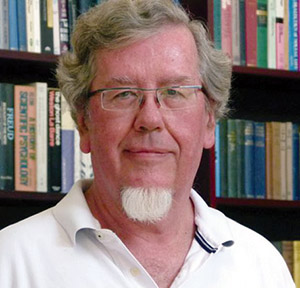
In Gary Doore’s compilation, Shaman’s Path: Healing, Personal Growth and Empowerment, Stanley Krippner writes: “Shamans were the world’s first healers, first diagnosticians, first psychotherapists, etc… There are shamanic healing methods that closely parallel contemporary behaviour therapy, chemotherapy, dream interpretation, family therapy, hypnotherapy, milieu therapy, and psychodrama. It is clear that shamans, psychotherapists, and physicians have more in common than is generally suspected. For the shaman, however, the spiritual dimension of healing is extremely important, whereas contemporary physicians and psychotherapists typically ignore it.”
Therapies have emerged with shamanic perspectives, including Stanislav Grof’s “Holotropic Therapy” and Michael Harner’s “Shamanic Counselling.” Many “close encounter” therapies, some with questionable efficacy, have emerged, with tenuous roots in early abduction experiences.
In the classic watershed UFO abduction case – that of Betty and Barney Hill – as told in the 1966 best-selling book The Interrupted Journey, Dr Benjamin Simon, a Boston psychiatrist, investigating the cause of stress-related problems experienced by the couple, used hypnotherapy to explore the UFO abduction story and arrive at a therapeutic outcome. The complex abduction story that emerged under hypnosis had a positive psychological and cathartic effect on the couple. The psychotherapeutic benefits of confronting the abduction story were obvious.
The growing number of health professionals who began to examine the UFO abduction mystery contributed to a therapeutic enrichment of the witness’s interaction with researchers. For example, Dr Rima Laibow, a New York psychiatrist, had been working with Budd Hopkins. More than half of the abductees she worked with were what she referred to as “dual victims.” They reported not only UFO abduction experiences but also child abuse. Some researchers suggest this aspect explains the origin of the abduction tales, i.e., the abduction story was a “screen memory” for child abuse. Dr Laibow rejected this hypothesis, pointing out the consistency of the accounts, the physical evidence in many cases, the emergence of many of the abduction narratives under hypnosis (“an uncommon mode of presentation for screen memories”) and the presence of similar abduction scenarios in the “unabused.”
Further still, she found in a number of cases, “following the abreaction of the abduction, therapeutic work could occur spontaneously about material which was not abreacted: the early physical and/or sexual abuse.” Elaboration of the abduction material often led to a reassessment of memories of abuse and a positive reintegration of the individual. Physiological symptoms were occasionally overcome, leading to a positive therapeutic outcome.
Dr Laibow concluded in an article in the International UFO Reporter that “the need for additional study, deeply intermeshed with, not separate from, the active therapy of those who have this set of realities in their lives, is a matter of urgent public health concern (whatever we now feel the locus of the reality to be).” Dr Laibow’s involvement tapered off with some controversy beyond the scope of this limited review.
Budd Hopkins remarked in Intruders that the long-term effect of these complex abduction experiences is psychological. He stated: “Though some of the resulting behaviour may be similar, UFO abductees are not like people who’ve had a single traumatic experience, such as the victims of automobile accidents or brutal muggings. They are people who have been, at intervals over the years, involuntarily subjected to a frightening and invasive ‘secret life’…. The emotions this secret life engenders can include fear, dread, helplessness, profound maternal confusion and loss, the sense of physical – even sexual – vulnerability, and a thousand other things, ranging all the way up to basic uncertainty as to where one really belongs, where home really is. And all along this road lies a terrible sense of self-doubt, a questioning of one’s very sanity.”
Initially, very few of the people who allegedly experienced an abduction sought out publicity. Indeed, most were terrified of it. They were more like the victims of assault than starry-eyed seekers of a new world reality. They seemed to be haunted by their experiences, and most were seeking answers. Instead, they were confronted by shallow, ridiculing media reporting and a general public that had no awareness of the controversy. The inevitable response from a position of ignorance was to either ridicule or reject – “They must all be nuts.” Given the extent of the problem, this was a very unwise approach. Something was happening. While some thought the issue might turn out to be a quantum leap in the field of anomalistic psychology, others felt otherwise.
Opening Up New Avenues
A full appreciation of UFO abduction and shaman experiences may also provide a quantum leap in understanding in another direction.
Whitley Strieber had viewed shamanism as “the shattered remnants of mankind’s early attempts to control this (visitor) phenomenon.” Perhaps the reverse may have been more likely? Shamanism involved individuals who seemed to have a strong measure of control over the set of realities they operated in. In UFO abduction experiences, the generally helpless victims have no control over the bizarre ‘reality’ that overwhelms them. It appeared a phenomenon operating on two opposite ends of a control continuum. Perhaps we, as a culture, had lost an ability that other cultures and generations may have had to some extent?
For abductees or experiencers, perhaps there are ‘rites of passage’ in achieving some level of understanding and control over the UFO abduction experience. Some experiencers or abductees have in recent times collectively developed communities of support. Many have gone “underground” to avoid connections. Others have become activists taking control of their experiences, resisting or avoiding those they did not see as understanding or embracing their realities. What the future holds for these changing dynamics remains to be seen.
Alien abductions may yet prove to be remarkable testimony to the eccentricities of the human condition – that is, these experiences may spring from the realm of the hoaxer, the deluded, the alienated of our society, or may yet be about something truly extraordinary. This complexity demands we keep an open mind and keep the matter properly in question until we have enough information to determine what is going on. The range of intelligent and qualified people looking into the UFO abduction mystery grew over the decades. People who have these experiences are also contributing in substantial and fascinating ways to bringing understanding to these strange realities.
Experiencers should not be unrealistically encouraged by advocates of alien presence nor, at the other extreme, should they be ridiculed by the sceptical among us. Instead, they should be helped to confront the reality of their experiences, whether or not it is eventually found to be prosaic, profound, or extraordinary. Only time will tell whether the search for answers will give us more insights into the human mind and the UFO phenomenon. Could it be that it will do both?
The Wandjina
It is fascinating when sacred art and the UFO subject intersect. Such intersections occur in occasionally unusual ways that are controversial and yet potently rich in potential meaning.
In my 2005 book Hair of the Alien, I wrote: “For the woman, the most strikingly similar image to that of the beings [she encountered in an experience Whitley Strieber described as ‘the best description of the gray beings’ among the thousands of letters that were sent to him in the wake of the success of his book Communion] is the Wandjina – the haunting Australian aboriginal rock paintings that reveal figures with large dark eyes and no mouth.”
The Wandjina (or Wanjina) are beautifully evoked in such works as Yorro Yorro: Everything Standing Up Alive by David Mowaljarlai and Jutta Malnic, Keeping the Wanjinas Fresh by Valda Blundell and Donny Woolagoodja, and most strikingly to a worldwide audience rising up from the floor of the Sydney Olympic stadium in 2000 during the opening ceremony.
Such striking resonances are hauntingly fascinating in their possibilities. I was pleased I had met David Mowaljarlai in the company of John Mack and Stephen Larsen (the co-author of Joseph Campbell: A Fire in the Mind: The Authorized Biography) a year before his passing in 1997. Donny Woolagoodja continues the tradition in his biography Yornadaiyan Woolagoodja, a wonderful exploration of his personal interaction and relationship with the Wandjina images.
Keeping the Wanjinas Fresh documented the Wanjina (Wandjina) rock paintings and the living tradition that are being kept “fresh” through “touching” up the old rock paintings and creating new “modern” expressions of the Wanjina – “eternal manifestations of the sacred life force… the supernatural ancestors” of the local aborigines (including the Worrorra, Ngarinyin and the Wunambal). Donny Woolagoodja has a direct linkage to the “retouching” tradition through his father, Sam Woolagoodja.
The book highlighted that “the Wanjinas created the countries that their human descendants belong to and they made the laws that guide their everyday lives. Visible as paintings at hundreds of rock art sites throughout their countries, the Wanjinas remained sources of strength for Sam and his people during the tumultuous years of colonisation. Even after the Worrora were displaced from their countries, the Wanjinas continued to instruct them in their dreams.” Also: “Expressions of the Wanjinascan be seen in the night sky, for instance the Milky Way. They are also closely associated with clouds and water… Sam once told (Blundell) that the Wanjinas ‘came through clouds’. ‘That’s their home’, he said, ‘they come from rain’. People are ‘born in sunlight’, while Wanjinas are ‘born in the dark’.”
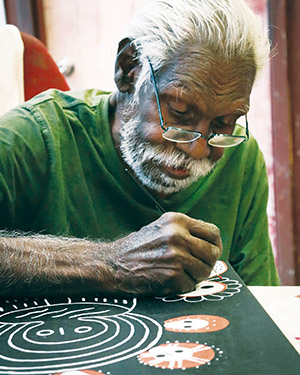
People around the world would have seen the Wanjina rising from the ground in the opening ceremony of the 2000 Sydney Olympics. Donny Woolagoodja was the traditional artist behind that extraordinary display. Most pivotal in the book, beyond the beautiful contemporary Wanjina artwork, is the “refreshing” tradition among chosen local people.“While most of the Wanjinas have lost their mouths, they are still able to instruct people in their dreams.” According to Donny, those aspects of recent paintings that appear to be ‘new’ are actually contemporary revelations of Lalai (“the primeval era of creation” or “the Dreaming” – an eternal sense of “living cosmology”). Donny explains: “When I paint, I follow the dream.”
Those tempted to speculate that the Wanjina (or Wandjinas – the original widespread spelling variant) are evidence of “extraterrestrials” visiting Earth should consider these works. I have been a cautious traveller in this context. On my website (www.theozfiles.com) and in my earlier book The OZ Files: The Australian UFO Story, I stated:
“The legends and lore of the indigenous aborigines also provide material suggestive of interactions with anomalous aerial phenomena. Of course, in speculation about such data, it should be realised that the accounts are of historical and anthropological nature and therefore care should be taken not to interpolate too much into them. Aboriginal myths incorporate the idea of ‘sky-beings’, with the Wandjina being among the most interesting to consider. The Wandjina have been preserved in a fascinating oral tradition and in a large collection of rock paintings scattered throughout the Kimberley region of northern Australia. The paintings have received all manner of interpretations from stylised representations of a pervasive myth system to naive ‘ancient astronaut’ theories. It is however fascinating to see that the indigenous tribes viewed the Wanjina as ‘the spirit in the cloud’. Indeed, the unique painting style shows a logical sequence from human figures to stylised representations of clouds. This duality of anthropomorphic form and ‘clouds’ is widespread in primitive cultures and finds an interesting parallel in the biblical accounts in ‘Exodus’. While this line of thought is suggestive of superior ‘sky beings’ acting as cultural catalysts for primitive societies, I should point out that making mythological component comparisons can make for interesting exercises, full of emotive similarities, but are purely speculative.”
Such speculations need to have their anchor points in the living and preserved traditions of the people who view the Wanjinas as their primary “religious” focus. To not do so is to ignore a primary and fascinating source of oral and pictorial knowledge about these extraordinary beings and risks disrespecting an extraordinary age-old and living tradition.
Fourth Level of Meaning
Another insightful book emerged in 2006. Treading Lightly: The Hidden Wisdom of the World’s Oldest People by Professor Karl-Erik Sveiby (a specialist in Knowledge Management) and Tex Skuthorpe (an aboriginal Nhunggabarra cultural custodian) described “a unique journey into traditional Aboriginal life and culture, and offers a powerful and original model for building sustainable organisations, communities and ecologies. It is a compelling message for today’s world.”
In 2004, Professor Sveiby approached researcher Steve Walters and me to get our opinions on a strange photographic anomaly – a possible aerial anomaly – he had recorded during April 2004 at Mount Oxley near Bourke, New South Wales, while in the company of Tex Skuthorpe and his partner. Karl-Erik presents the unusual photo in the book as a possible manifestation of the Fourth Level of meaning in aboriginal stories – the spiritual realm. Through the fascinating aboriginal story of How the Nhunggabarra got flowers, Mount Oxley (or Wubi-Wubi) was a focus of shamanic contact between aboriginal men of high degree (or wiringins) and the ancestral being Baiame (Baayami).
Mount Oxley had already become an interesting place for me. I visited it back in September 2003, exploring its fascinating sense of presence and its enigmatic lore of strange phenomena. I was already aware of the legend of the flowers through the renderings of K.Langloh Parker of local aboriginal tales she collected in the late 1890s. It was fascinating to see the story retold through the words of local custodian Tex Skuthorpe and its “Fourth Level” of meaning and beautiful evocation through Tex’s great paintings.
While prosaic explanations may be evident for the photo anomaly Karl-Erik recorded (such as moisture condensation effects), it is fascinating to consider the context he and Tex explored in their important book. I certainly did not want to detract from the central message of Treading Lightly, given its significance as a potent intersection between a unique ancient culture and modern knowledge management theory.
There may have been fascinating resonances between the concepts of “Fourth Level” (through Treading Lightly – shamanic spiritual interactions) and “Fourth Kind” (through “alien abductions”) – intersections I had been contemplating for some time. Treading Lightly describes powerful and important matters that need to be focused upon by our modern culture.
Encounters Throughout Asia
My trips in Thailand and China during 2005 and 2006, exploring the Asian UFO experience and evidence for an “alien DNA paradigm,” also yielded evidence possibly supportive of the shamanic alien abduction connection. I focused on genetic connections at a very specific and detailed level because of the unusual nature of the rare Asian mongoloid sequence, revealed in the Khoury sample described in my book Hair of the Alien. They occurred in the DNA signatures of an isolated group of people, the Lahu, who were limited to the region of the southern Chinese province of Yunnan, and the immediate region bordering that locality – northern Thailand, Myanmar (Burma), and Laos. The areas of Yunnan and northern Thailand yielded considerable data and research, particularly with fascinating UFO and unusual light phenomena connections in both regions.
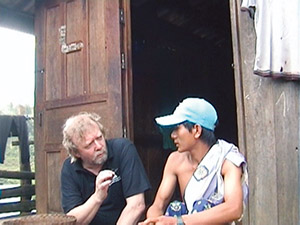
Strange light phenomena and possible UFO connections are found in the shamanic type elements of Lahu society. Dr Anthony Walker’s 907 page Lahu study Merit and the Millennium: Routine and Crisis in the Ritual Lives of the Lahu People revealsone of the more fascinating Lahu shaman-like contact experiences involving a leading Lahu figure, Ca Nu, who claimed the Sky beings/spirits visited him and gave him a mysterious glowing stone with inscriptions. He also reported seeing strange “hole” shapes crossing the sun, along with anomalous “stars.” Ca Nu connects his experiences with spiritual prophecy, a dynamic revealed on numerous occasions in not only shaman lore but in many contact and abduction situations.
A ball of light was encountered by dissident Chinese writer Ma Jian in 1986 in Lahu territory in southern Yunnan China. Escaping from custody, he was trying to find his way through dangerous terrain. Suddenly,“a light appeared in the darkness. It was neither a torch nor a candle, nor a glow-worm shaking in the breeze. It seemed to come from another realm. It rose from a stream and floated through the trees then stopped by some branches ten meters away and slowly dropped to my eye level… I walked forward and the ball of fire followed me through the branches, guiding my way for twenty kilometres until the sky turned white.”
He described the encounter in his book Red Dust. I met Ma Jian during the 2003 Sydney Writers Festival. He confirmed that his account was not a literary metaphor for his sense of alienation with contemporary China. Instead, it was a real experience with a ball of light about the size of a rockmelon. This Lahu region phenomena near the Lancang (the Mekong) River echoes the intriguing Naga light phenomena that most prominently plays out near Nong Khai, on the Mekong, as the mighty river enters Thailand. I witnessed and filmed the Naga light balls coming out of the Mekong in 2006. My investigations resisted the straightforward explanation of hoaxing for tourism purposes.
Yang Zheng of the Kunming UFO Research Association indicated his “most dramatic case” occurred in November 2006 (the month after my visit to Yunnan) when thousands of villagers in Zhenyuan Yi, Hani and Lahu Autonomous County of Yunnan Province witnessed seven white hemispherical shaped objects hovering directly above the property of a local CPC (Chinese Communist Party) cadre for nearly two hours. The objects appeared to keep changing shape. As it was a small village, word soon spread and many villagers arrived to witness the sighting. They started pursuing the objects, but the UFOs disappeared. I had been in the Lahu territory only a few weeks earlier.
All this seems a compelling confirmation of the potential breakthrough research focus provided by the alien DNA paradigm and the shamanic alien abduction perspective.
Click here for Part One of this article.
The above was originally published in Nature & Health (Australia), Vol. 11, No. 1, Autumn 1990, and has been revised and updated by the author.
© New Dawn Magazine and the respective author.
For our reproduction notice, click here.

